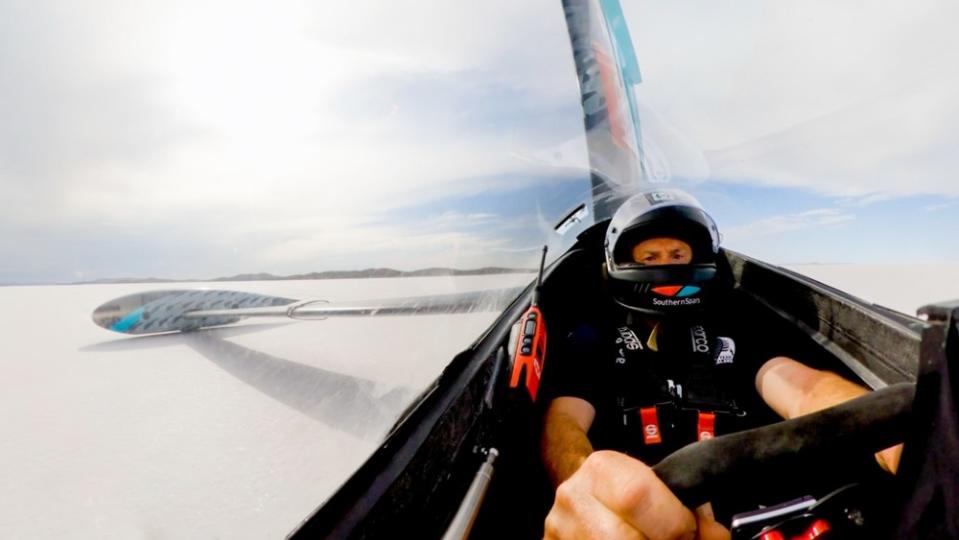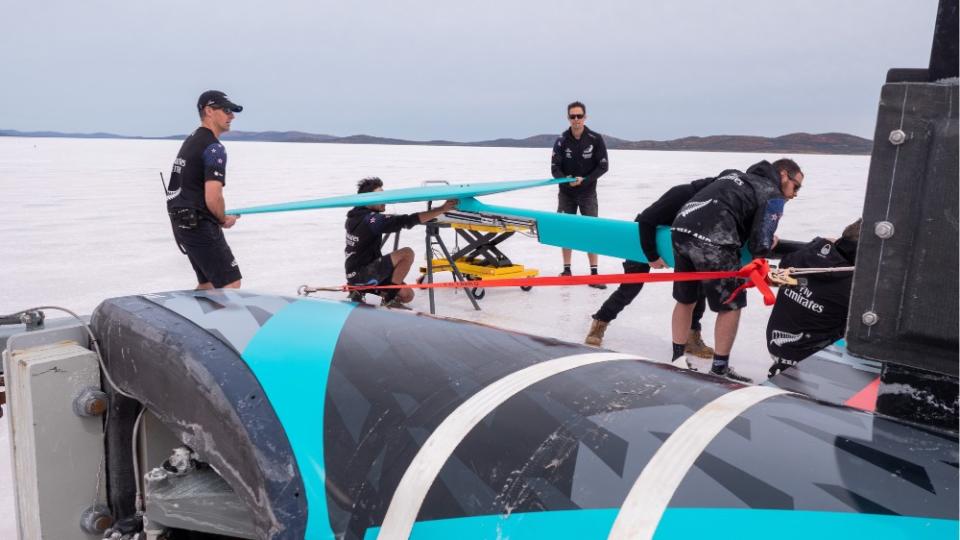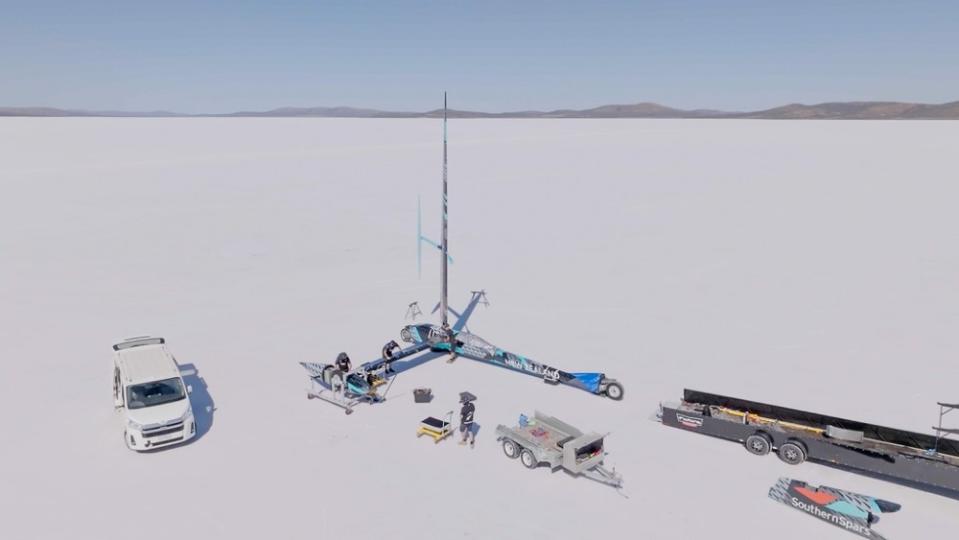This America’s Cup Team Just Broke the World Speed Record on a Land Yacht

- Oops!Something went wrong.Please try again later.
Having a professional sailor driving the world’s fastest wind-powered land-speed vehicle may sound crazy. Until you hear that the sailor’s part of Emirates Team New Zealand, the sailing team that has won more America’s Cups than any other syndicate in the history of the 171-year-old series. Often considered the underfunded underdogs, the Kiwis typically found innovation by looking outside of sailing for new ideas.
Earlier this year, Team New Zealand introduced the world’s first zero-emissions, foiling powerboat with a hydrogen fuel cell, not to mention multiple innovations they’re bringing to their foiling cats for the next America’s Cup in 2024.
More from Robb Report
Inside the 226-Foot Superyacht That Doubles as a Floating World Cup Viewing Suite
This New Aspen Restaurant Brings Latin American and African Flavors to Après Ski Meals

But Glenn Ashby’s speed-breaking ride of 222.4 kmh (or 138.2 mph) on Sunday across the dried sands of Australia’s remote Lake Gairdner is off the charts. Team New Zealand’s 46.2-foot-long land yacht, Horonuku, is a colorful, slender carbon-fiber structure with four wheels and a 36-foot-tall rigid-wing sail that burned up the white sands with only a paltry wind speed of tk knots (tk mph). There are no engines and, according to race rules, the vehicle had to be pushed by Ashby’s team at the start. It also had run over the sands, without any paved roads to help.
Ashby, a native Australian who has been on the Kiwi team for 12 years, had dreamed since he was a child of breaking the record. Englishman Richard Jenkins, who held the previous record, only did so after designing and building five vessels for a decade before establishing the 202.9 kmh (126.1 mph) record in 2009. On the day Jenkins set the record, the winds were blowing from 26 to 40 knots. Under the rules, Horonuku had to establish the new record by at least 1 mph.
There had been much drama leading up to the record run. The lake had received an unusual amount of precipitation earlier in the year and wouldn’t be ready for a record attempt until the sand dried. In November, the team sat around for several weeks waiting for the chance to break the record, but rain kept the sand waterlogged.

The team returned in early December. Ashby nearly broke the record on his first day back, maxing out at a hair over 200 kmh (124.27 mph) in about 23 knots of wind. The team used the run to identify obvious elements that could be improved to increase the vessel’s performance.
“The steering was tough work,” said Ashby after the earlier run. “So that is the main focus to identify solutions to lighten the load as this will help with performance. To be able to build speed more efficiently and effortlessly will help reaching higher speeds.”

The team clearly found it yesterday breaking the record with wind speeds of just above 20 knots.
So why is a professional sailing team messing about with land-speed records? Emirates Team New Zealand spokesperson Hamish Hooper told Robb Report that the lessons learned at Lake Gairdner will translate to its foiling yachts. “It’s provided a really valuable project for the whole team to keep them engaged and thinking outside the usual design parameters of the America’s Cup. Both have had significant benefits for our team.”
The group said on its Facebook page that it might continue to break its new record in the new year.
“We had a bit of dream and it was crazy but it’s starting to kick home,” said Ashby after breaking the record. Plus, he added, the ride was “bloody awesome.”
Best of Robb Report
The 15 Best Travel Trailers for Camping and Road-Tripping Adventures
The Chevy C8 Corvette: Everything We Know About the Powerful Mid-Engine Beast
Sign up for Robb Report's Newsletter. For the latest news, follow us on Facebook, Twitter, and Instagram.

